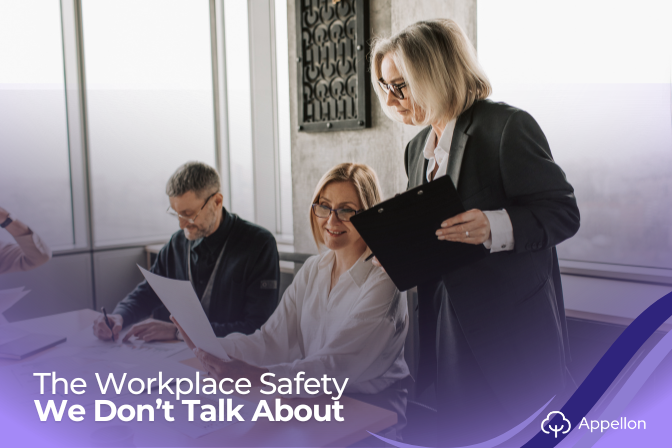Most organisations have policies, engagement surveys, and strategies for safety. Yet, the kind of safety that determines whether people show up fully rarely appears on a slide deck.
It’s invisible, but measurable not through metrics, but through behaviour.
The kind of safety we’re talking about lives inside the nervous system. It decides, moment to moment, whether the brain releases curiosity or cortisol.
Every interaction at work, a meeting, a feedback moment, a restructure, triggers what neuroscientists call a prediction loop:
“Can I ask this question?”
“Can I speak up here?”
“Can I get it wrong safely?”
If the answer feels like no, the brain downshifts into self-protection. Cortisol rises, curiosity drops, and contribution shuts down. It’s not a personality flaw. It’s neuroeconomics. The brain is conserving energy.
Appellon calls this the Hidden System, the background code that determines whether effort flows or stalls.
When leaders say, “My people seem disengaged,” what they’re often seeing isn’t disengagement, it’s a threat response. The system has gone into energy-saving mode because uncertainty feels unsafe.
The Modern Paradox
We’re living in a time of endless information - strategies, sprints, software. But what organisations are really starved for isn’t information. It’s regulation.
When change is constant and clarity is rare, people’s internal safety systems overload. We see shorter answers, minimal risk-taking, and a pull toward the familiar. This is the behavioural cost of ambiguity.
Appellon’s principle says it best:
“Fear doesn’t block progress. Ambiguity does.”
When people don’t know what’s happening, what matters, or what’s next, their brains can’t afford creativity. They conserve instead.
How to Rewire Safety Into the System
Safety isn’t built through slogans or workshops. It’s built through rhythm: predictable patterns that give the brain permission to relax.
Three small but powerful system moves can change the chemistry fast:
1️⃣ Predictability Rituals – A five-minute “Known–Unknown–Next” check-in each week reduces uncertainty. The brain translates predictability into calm.
2️⃣ Visible Progress – Motivation lives in dopamine, not in memos. When progress is made visible, people feel rewarded for contributing.
3️⃣ Micro-Reinforcement – Small weekly nudges retrain behaviour: clarity → safety → contribution. Over time, this becomes the culture’s rhythm.
The Real Safety Metric
Most cultures don’t collapse from stress; they collapse from sustained ambiguity. The answer isn’t to train resilience first, it’s to build predictability.
The calmest teams aren’t the ones with no stress. They’re the ones fluent in safety, teams that know how to stay focused when things get uncertain.
Before you ask your people to give more energy, ask yourself:
“When uncertainty spikes, what do they predict will happen next?”
Because whatever that answer is, that’s your real culture.
👉 Book a Clarity Consultation with Appellon to simplify work, reduce burnout, and boost team performance.
